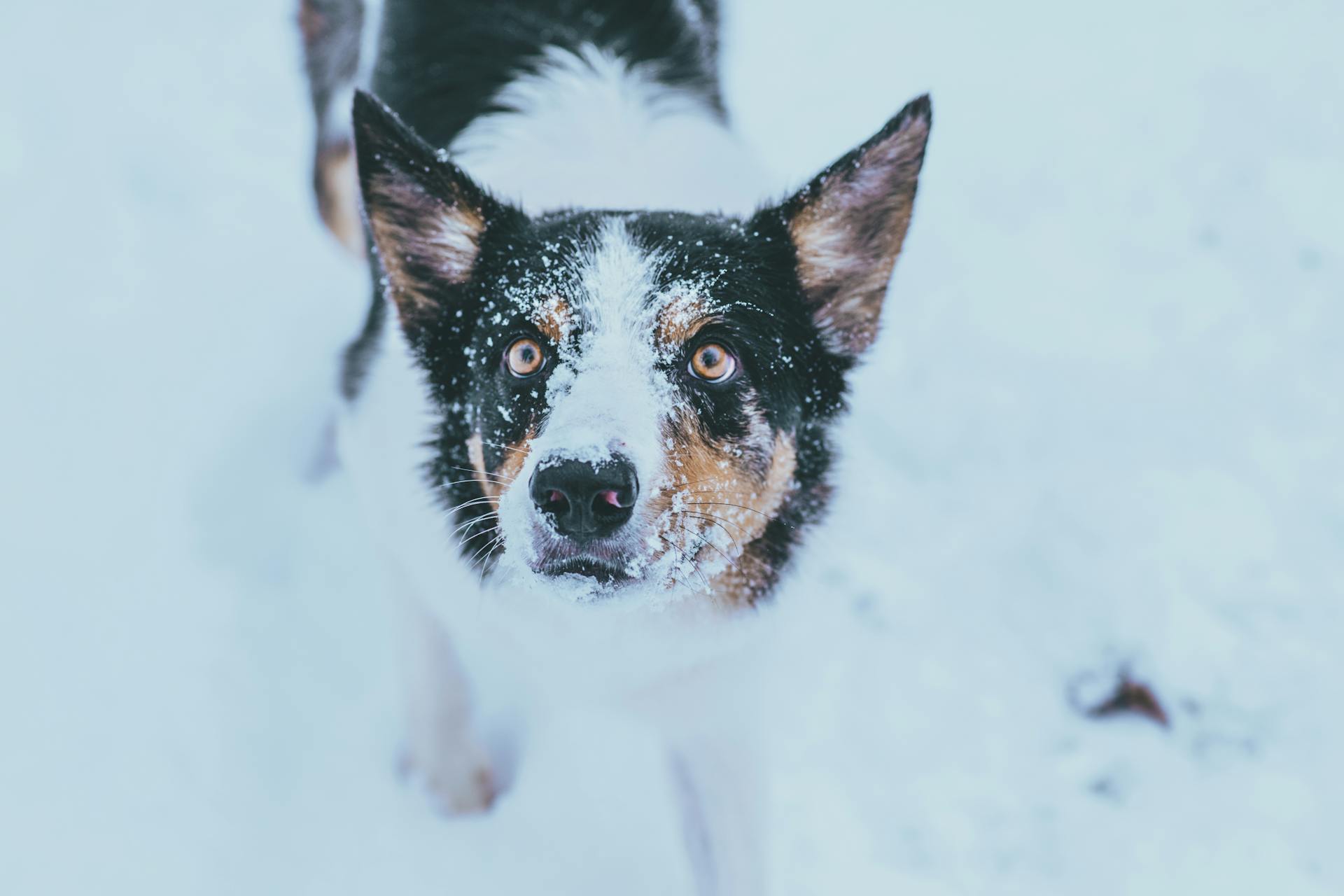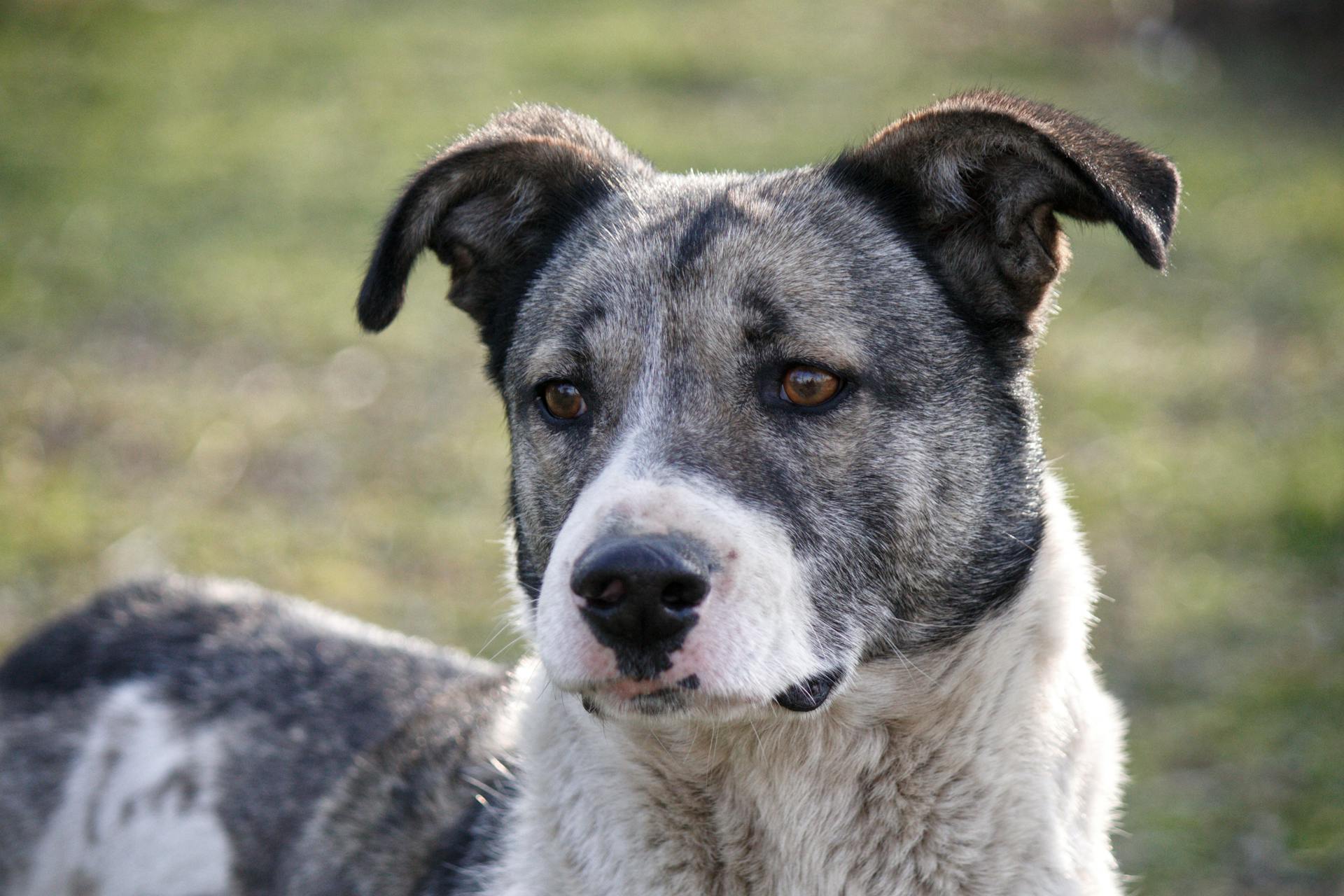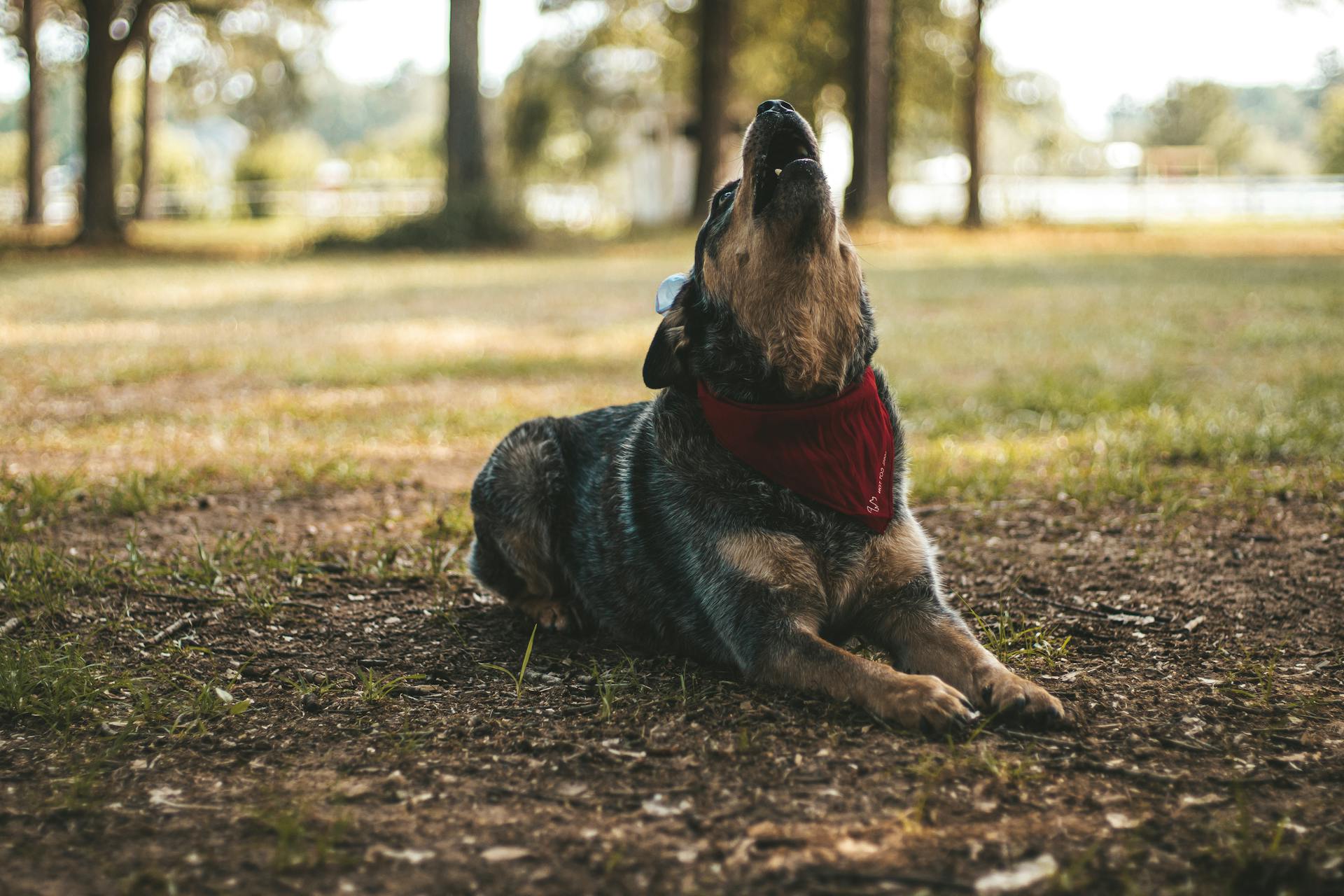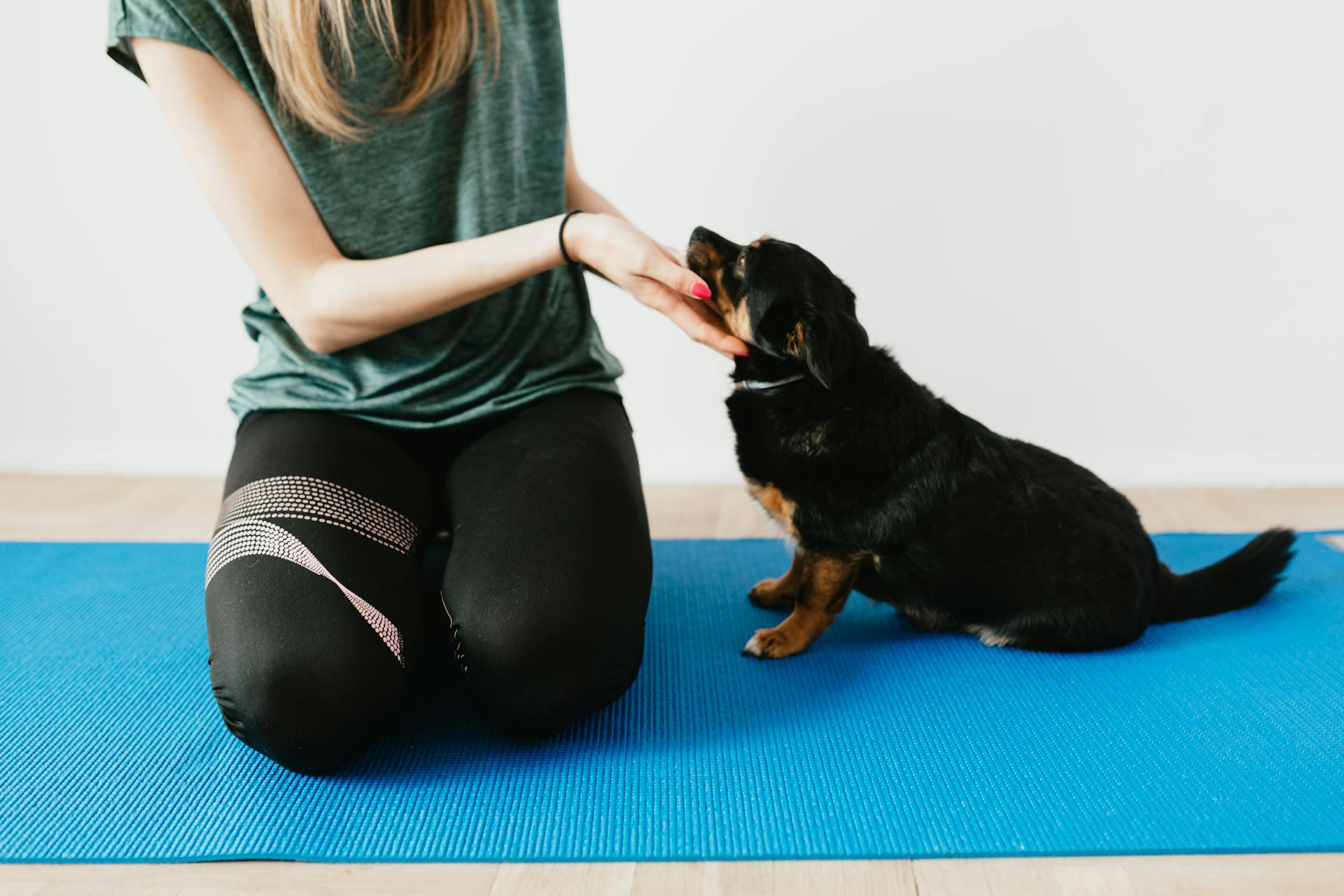
The Lancashire Heeler is a small, energetic dog breed that originated in England. They were originally bred to herd sheep and cattle.
These dogs are known for their intelligence and strong work ethic. They thrive on physical and mental stimulation.
To keep your Lancashire Heeler happy and healthy, you'll need to provide regular exercise and training. A daily walk and playtime should be a minimum.
Physical Characteristics
The Lancashire Heeler is a small but mighty breed, and their physical characteristics are just as unique as they are adorable. They typically stand between 10-12 inches tall at the shoulder.
Their dense double coat is either black and tan or liver and tan, with a small white chest blaze possible in some cases. The coat is harsh and smooth, with an undercoat that keeps them dry in all kinds of weather.
One of the most distinctive features of the Lancashire Heeler is their "Heeler Smile", where they draw back their lips and give a little smirk. It's a sure sign that they're feeling friendly and in a good mood.
Size
The Lancashire Heeler is a small but sturdy breed. They typically stand between 10 and 12 inches at the shoulder.
Males are slightly taller than females, with an ideal height of 12 inches, while females reach 10 inches.
Coat and Coloring
The Lancashire Heeler's coat is a key part of its charm. It's coarse and shiny, with a fine undercoat beneath a thick, weather-resistant topcoat.
The coat can be black or liver-colored, both with tan markings. You'll often see a small white chest blaze in this breed.
Regular brushing with a firm bristle brush will keep the coat in good shape, and it's relatively low-maintenance. Bathe your Lancashire Heeler only when it's absolutely necessary.
The coat is dense and double, with a harsh and smooth texture. It's designed to keep the dog dry in all weathers.
The Lancashire Heeler's coat may have a slight mane around the neck in winter, giving it a rugged and handsome look.
General Appearance
The Lancashire Heeler's general appearance is quite charming. They are sturdy, short-legged dogs.
Their little bodies are a bit longer than they are tall, which makes them quite compact. They carry their tails skyward with a bit of a curl.
Their wide, flat heads taper a bit, and their almond-shaped eyes are set wide apart. This unique facial structure gives them a sweet and observant look.
The Lancashire Heeler's size is quite manageable, usually measuring between 10–12 inches at the shoulder and weighing 13–18 pounds.
Temperament
The Lancashire Heeler is a loyal breed that forms strong bonds with its human family members.
They are intelligent and eager to please, making them relatively easy to train, though they can display a touch of stubbornness at times.
Their loyalty and affection towards their family is unmatched, and they thrive on human interaction, often seeking attention and physical affection.
Lancashire Heelers are naturally alert and can make effective watchdogs, announcing the presence of strangers with their barking.
Additional reading: Tibetan Mastiff Next to Human
While they can be reserved around unfamiliar people, they are typically friendly and approachable once they feel secure.
They generally get along with children, but should be closely supervised for the safety of everyone involved.
Their herding instincts may manifest in playful nipping at heels, a behavior that can be redirected with proper training.
Lancashire Heelers are courageous and happy dogs that are friendly and affectionate towards their family, but can be wary of strangers and tend to bark a lot.
They are a strong breed that likes to participate in various activities, and can carry a ball or object the size of themselves.
On a similar theme: Are Border Collies Friendly
Health
The Lancashire Heeler is a relatively healthy breed, but like any other breed, they can be prone to certain health issues. They typically live for around 12 to 15 years.
One of the most common health problems in Lancashire Heelers is cataracts, which can lead to blindness.
Collie eye anomaly and primary lens luxation are also potential issues, with the latter being caused by an autosomal recessive mutation of the ADAMTS17 gene. These eye conditions can cause vision impairment or even blindness if left untreated.
Regular veterinary check-ups are crucial to detect any health problems early on.
Here are some of the most common serious conditions that can affect Lancashire Heelers:
- Collie eye anomaly
- Primary lens luxation
- Persistent pupillary membranes
- Patellar luxation
It's worth noting that the Lancashire Heeler is one of the more commonly affected breeds for primary lens luxation.
Care and Feeding
Caring for a Lancashire Heeler requires regular exercise to keep them physically fit, which includes daily walks, playtime in a secure yard, and engaging in dog sports such as agility or flyball.
Their intelligence demands regular mental stimulation, achieved through puzzle toys, obedience training, and interactive games to prevent boredom.
Socialization is vital, with early exposure to various situations, places, and people helping them become well-adjusted and friendly with other dogs and individuals.
Training is key, focusing on positive reinforcement techniques to harness their eagerness to please.
Routine grooming, including brushing their short, dense coat and checking ears for infections, is necessary.
A balanced diet is essential, providing high-quality commercial dog food with high-quality sources of animal protein as the primary ingredient, moderate amounts of healthy fats, and whole grains like brown rice or oats.
Limit treats to no more than 10 percent of their daily calories to prevent unwanted weight gain, and ensure fresh, clean water is always accessible.
For another approach, see: Are Border Collies High Energy
Diet and Nutrition
Proper nutrition is key to maintaining your Lancashire Heeler's health and well-being. It's essential to provide them with a balanced diet that suits their age, size, and activity level.
You can opt for high-quality commercial dog food, whether it's dry kibble, canned food, or a combination of both. Keep a close eye on portion control to prevent overfeeding, as Lancashire Heelers can be prone to obesity.
High-quality sources of animal protein should be the primary ingredient in your dog's food. A moderate amount of healthy fats is also essential.
Carbohydrates should be included in their diet, but not dominate it. Whole grains like brown rice or oats are preferred.
Limit treats to no more than 10 percent of their daily calories to prevent unwanted weight gain.
Fresh, clean water should always be accessible for your Lancashire Heeler.
Regularly monitor their weight to ensure a healthy body condition, adjusting food portions as needed.
Consult your veterinarian for specialized dietary guidance if your Lancashire Heeler has allergies, sensitivities, or medical conditions.
Recommended read: Best Dog Food for Blue Heeler Puppy
Care
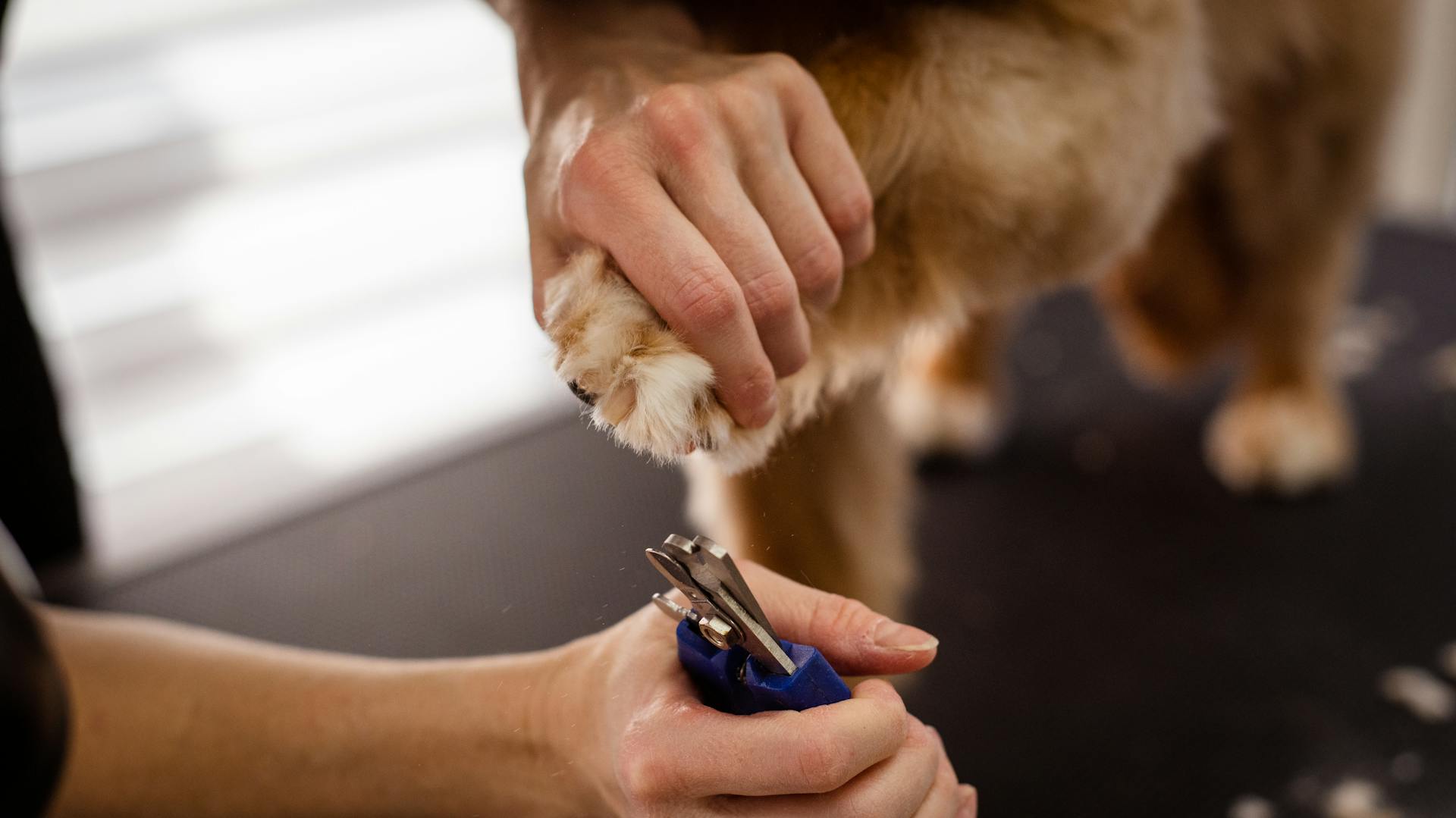
Lancashire Heelers are intelligent dogs that require regular mental stimulation to prevent boredom. This can be achieved through puzzle toys, obedience training, and interactive games.
To keep them physically fit, daily walks, playtime in a secure yard, and engaging in dog sports like agility or flyball are essential.
Socialization is vital for Lancashire Heelers, with early exposure to various situations, places, and people helping them become well-adjusted and friendly with other dogs and individuals.
Positive reinforcement techniques are key in training Lancashire Heelers, as they are eager to please. Routine grooming is also necessary, including brushing their short, dense coat and checking ears for infections.
A balanced diet that suits their age, size, and activity level is crucial for maintaining the health and well-being of your Lancashire Heeler. High-quality commercial dog food is a good option.
Portion control is essential to prevent overfeeding, as Lancashire Heelers can be prone to obesity. Monitor their weight regularly to ensure a healthy body condition.
Lancashire Heelers are busy bees by nature and require plenty of exercise and training to thrive. Their coats are fairly low-maintenance, requiring minimal grooming.
Expand your knowledge: Are Blue Heelers Double Coated
Frequently Asked Questions
Do Lancashire Heelers bark a lot?
Yes, some Lancashire Heelers may bark frequently, especially around strangers
What is a Lancashire Heeler mixed with?
A Lancashire Heeler is believed to be a cross between Welsh Corgis and the black and tan Manchester Terrier. This unique ancestry likely contributed to the breed's distinct characteristics.
Are Lancashire Heelers related to corgis?
Yes, Lancashire Heelers are believed to be a cross between Welsh Corgis and other breeds, specifically developed in Northern Wales. This unique heritage is thought to have originated in the 17th century in a Northern Wales meat market.
Do Lancashire Heelers make good pets?
Lancashire Heelers are suitable for families with older children who can assist with training and obedience. They make great pets for active families who can provide the necessary attention and care.
Are Lancashire Heelers rare?
Yes, Lancashire Heelers are a relatively rare breed, listed as "vulnerable" by the Kennel Club in the UK. They have a limited presence in the country, with clubs emerging in the 1970s.
Sources
- https://dogtime.com/dog-breeds/lancashire-heeler
- https://www.thesprucepets.com/lancashire-heeler-dog-breed-characteristics-and-care-8601419
- https://www.npr.org/2024/01/03/1222730911/newest-dog-breed-akc-lancashire-heeler
- https://www.wisdompanel.com/en-us/dog-breeds/lancashire-heeler
- https://en.wikipedia.org/wiki/Lancashire_Heeler
Featured Images: pexels.com
